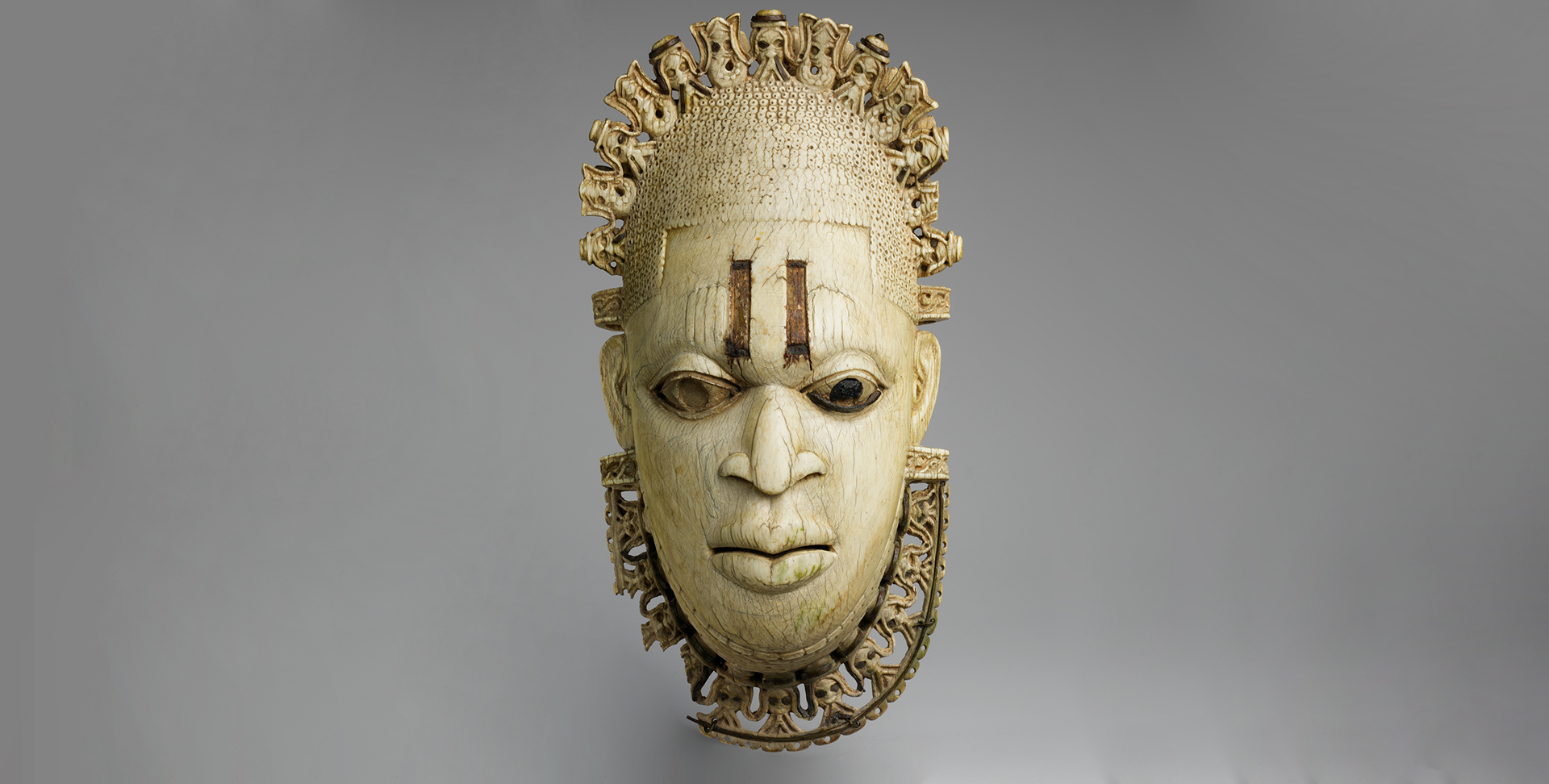


Portuguese were the first Europeans to explore Africa.
At the beginning of the 15th century, encouraged by Prince Henry the Navigator, the first boats left the country for Africa, and they made very quick progress!

Why this sudden need to explore Africa?
Henry the Navigator was driven by two ambitions:

The Portuguese were the first Europeans to explore Africa, with the aim of bringing back spices, ivory and gold.
The arrival of the Portuguese had an unexpected consequence: the birth of curious, half-European, half-African objects …
The shape and the subject were Portuguese, whereas the technique and style came from Africa. These objects became referred to as Afro-Portuguese ivory. Today, the fact that they are rare makes these objects even more exceptional!
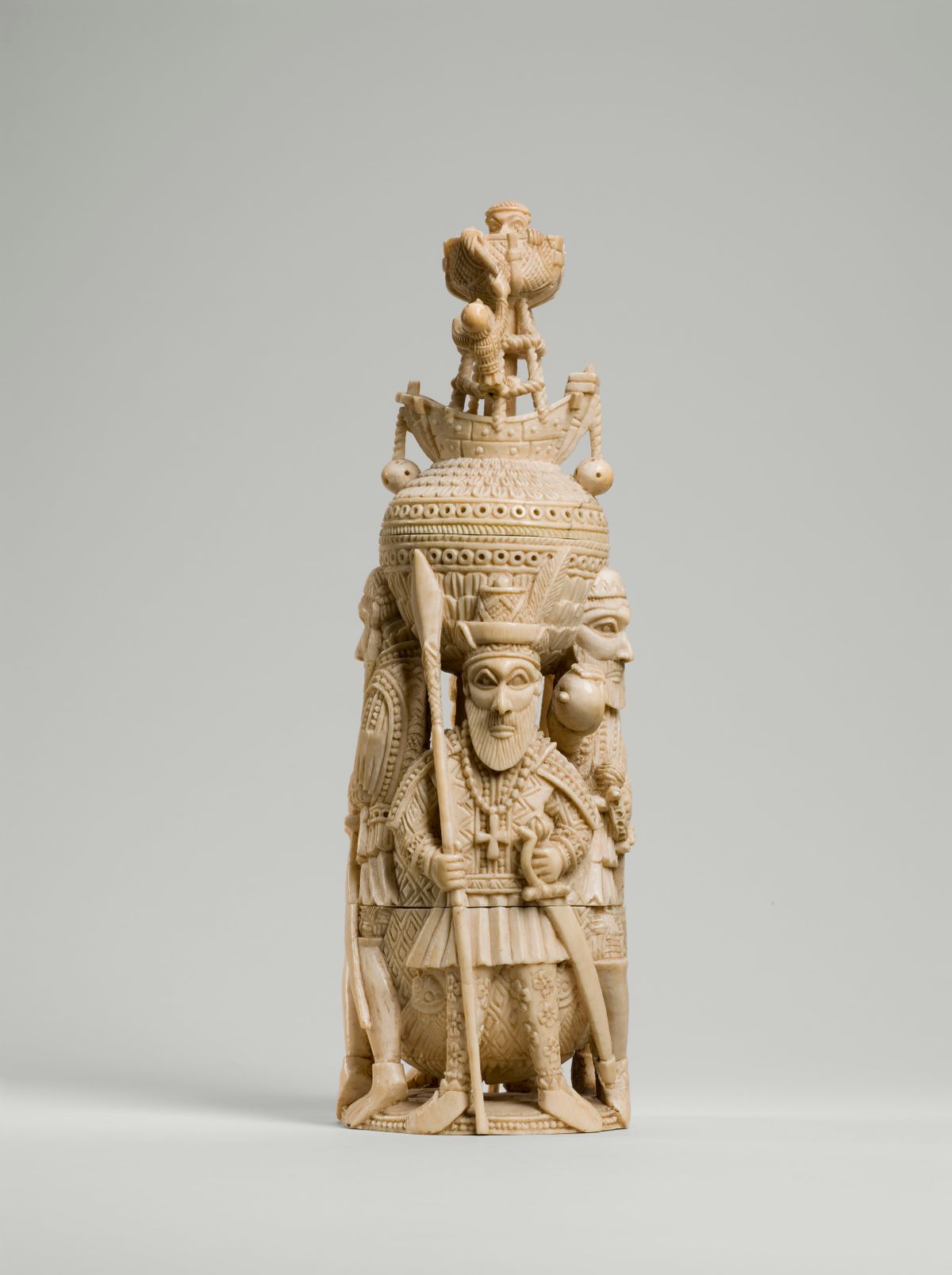

The Portuguese ordered table decorations in ivory from artists in Benin.
This is another example of an object in ivory: the famous ivory pendant masks, portraying Queen Idia.
This queen was an extremely important monarch of the Kingdom of Benin during the 16th century. She was a warrior queen, fighting for her son and to protect his kingdom.
He awarded her the title of “lyoba” (Queen Mother) to thank her and had valuable works sculptured as a tribute to her!

“lyoba” Idia, Queen of the Kingdom of Benin during the 16th century, is portrayed in pendant masks, in memory of her warrior exploits.
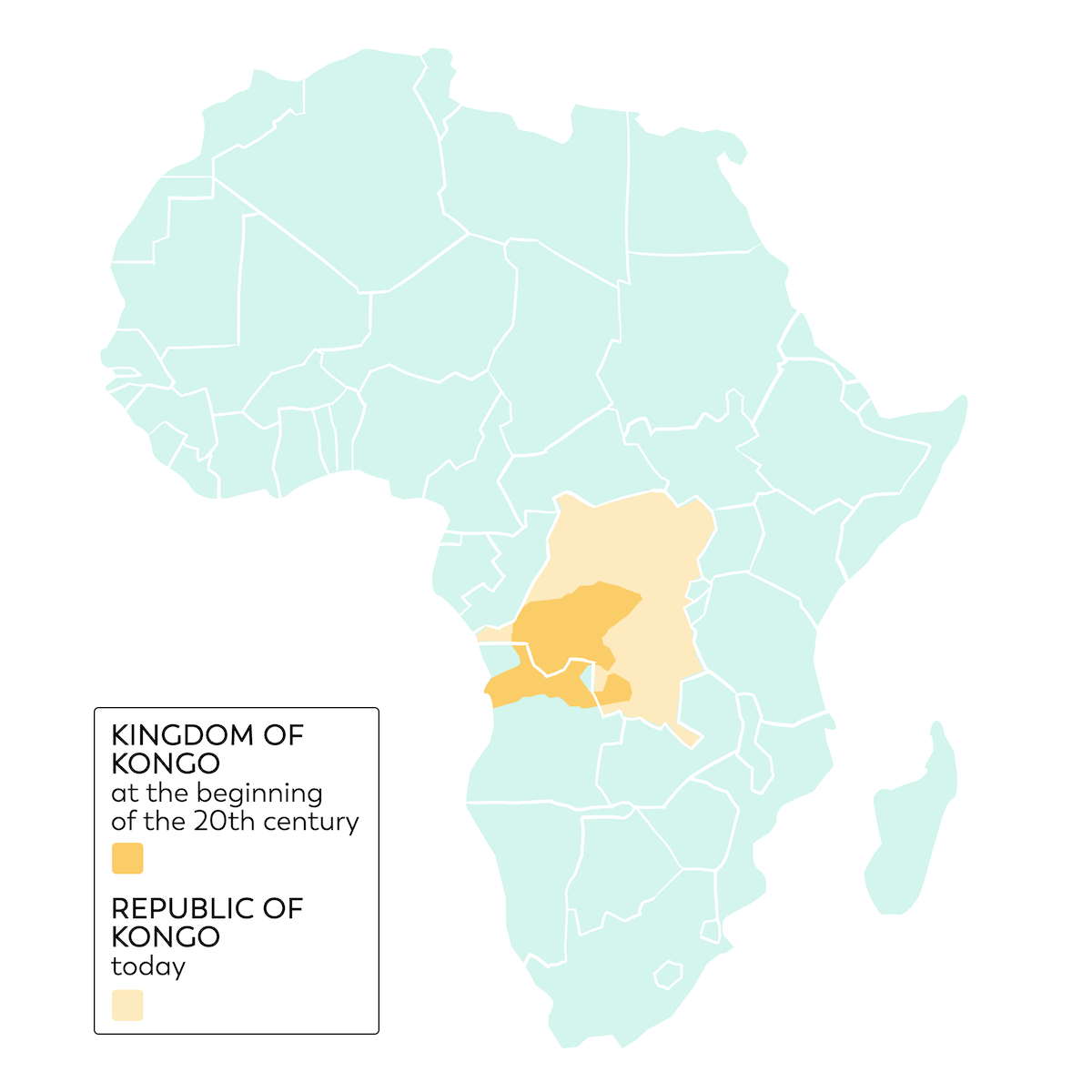
Afro-Portuguese ivory articles are not the only half-European, half-African objects. Let’s head to the Kingdom of Kongo …
This kingdom is one of the very first in Africa to have been Christianized, which started at the end of the 15th century. This Christian influence gave birth to “Kongo Crosses”, on which Jesus is recognizable on the cross, as is the case in European art, but the material (brass) is of local origin, along with some additions…
In this case, as for the frightening nail studded Minkisi, magical power has been added to the cross … a way of finding roots in the kingdom’s traditions and strengthening their effectiveness.
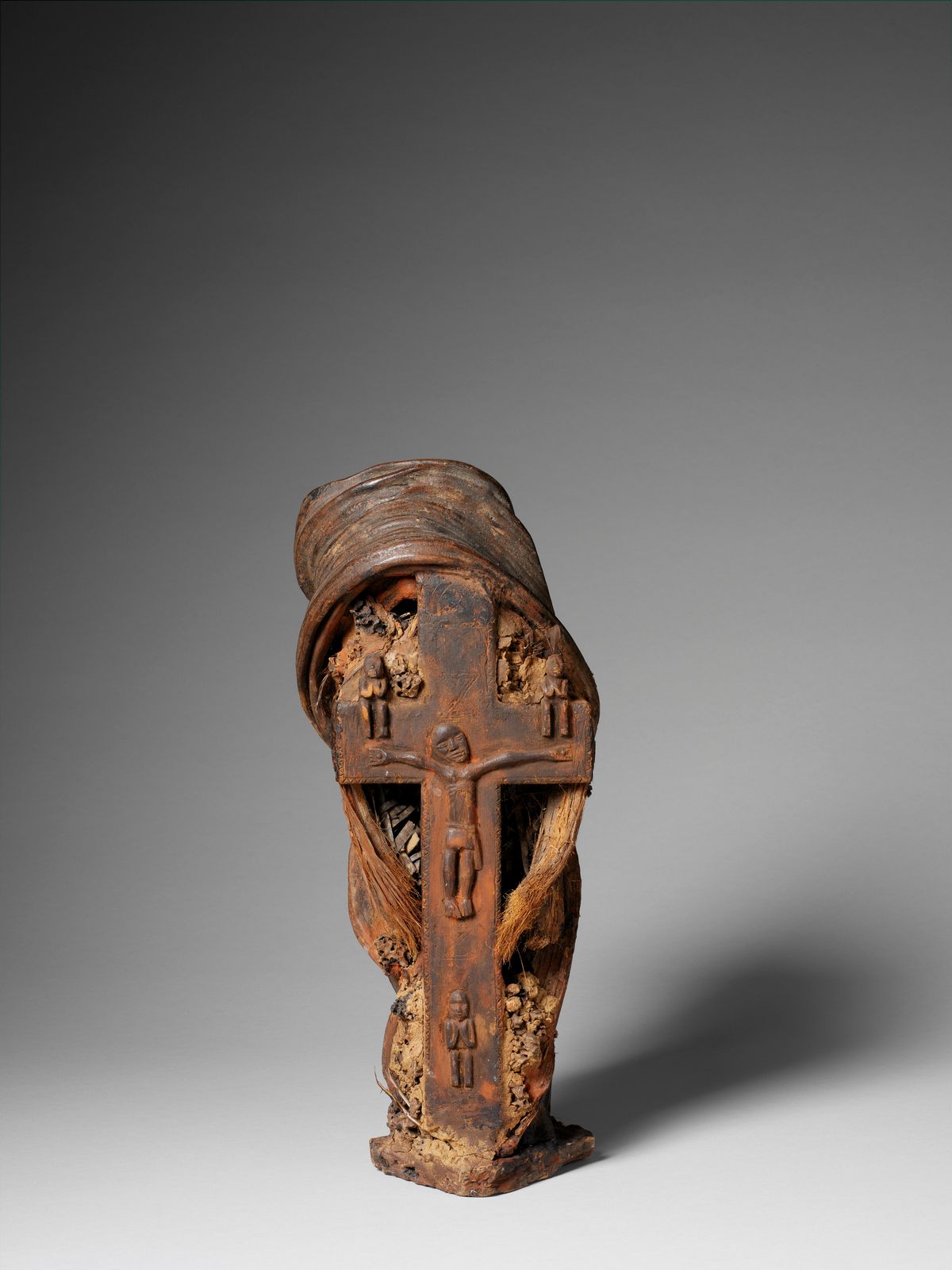

In the Christianized Kongo kingdom, crosses were adjusted to suit local traditions, especially through the belief that they had magical powers.
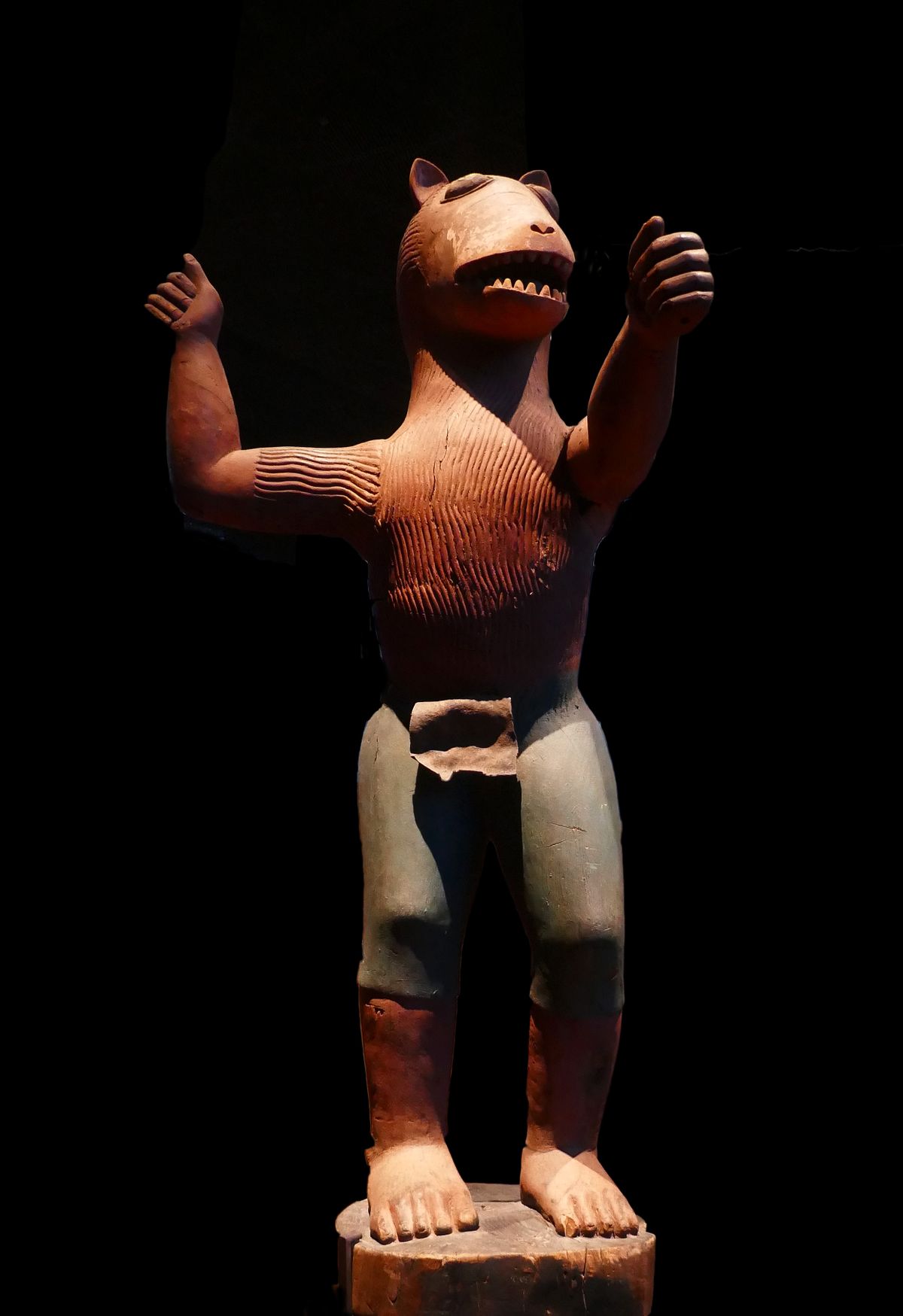
Do you remember the King of Dahomey’s “Amazons”? This king, Behanzin, fiercely resisted the European colonizers.
For the French colonial regime, Dahomey was a “barrier” to be breached in order to reach the African interior.
In 1892, a diplomatic argument was the ideal pretext for marching against the kingdom … In spite of the courage shown by the “Amazons”, Dahomey was no match for the French artillery.

The kingdom of Dahomey was conquered by France after 1892, in spite of the brave fight put up by the Amazons.
King Behanzin was not easygoing, and he had himself portrayed in the form of a man with a shark’s head. Watch out, anyone who threatened his State!
Just before the French arrived in the capital, he set his palace on fire, but faced with the military supremacy of the French, he finally decided to surrender in 1894. The French, afraid that he would lead another revolt, exiled him to Martinique, where he lived until his death …


King Behanzin, portrayed in art with a shark’s head, had to surrender to the French in 1894.

"*" indicates required fields